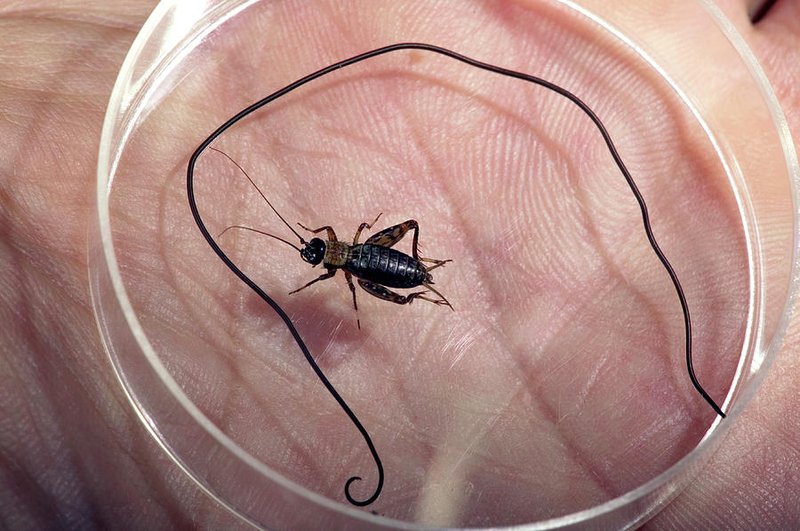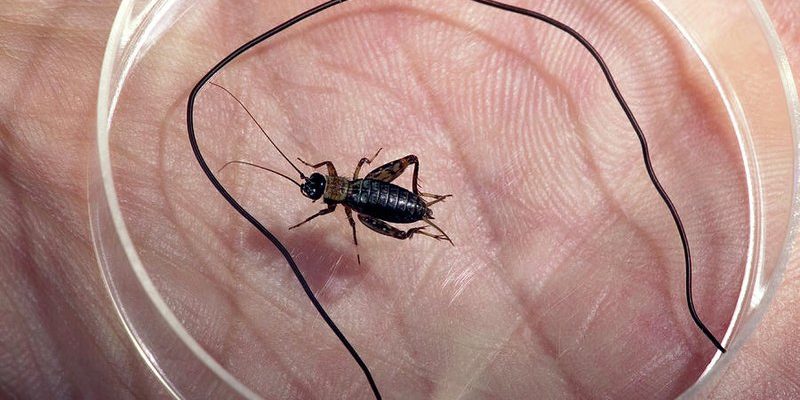
So why should we care about these squiggly wonders? Well, they act as bioindicators, meaning they can give us vital information about the quality of their habitat. They can indicate pollution levels, changes in climate, and even the overall biodiversity of an area. Plus, using hairworms for environmental monitoring is a relatively new but exciting frontier in ecology. Let’s dive deeper into this topic, exploring how hairworms operate, why they matter, and how they can help us shape a healthier planet.
What Exactly Are Hairworms?
To put it simply, hairworms are worm-like parasites that belong to the phylum Nematomorpha. But there’s more to them than that! They usually develop inside insects, mainly crickets and grasshoppers, making them quite the interesting addition to the food web. Picture this: a hairworm living inside a cricket, tapping into its nervous system, and eventually urging it to leap into water. This bizarre behavior not only helps the hairworm to reproduce but also gives us a unique look into the interactions of ecosystems.
These worms can grow quite long compared to their insect hosts, sometimes stretching up to a meter! Despite their somewhat creepy reputation, they play an essential role in their environments. They help control insect populations and even recycle nutrients back into the ecosystem when they die. Honestly, that’s quite a lot of impact for a creature that most people don’t even notice!
The Role of Hairworms in Environmental Monitoring
You might be wondering how a creature that spends most of its life inside a cricket can help monitor the environment. Hairworms are incredibly sensitive to changes in their surroundings, which makes them valuable bioindicators. When scientists study them, they can gauge the health of ecosystems. For example, a decrease in hairworm populations might signal increased pollution or habitat disruption.
Environmental monitoring often involves assessing water quality, soil quality, and biodiversity. Hairworms can contribute to this by providing insights into the health of aquatic habitats. They thrive in clean environments, so if they start to disappear, it could mean that something is wrong. It’s like the canary in the coal mine—if the hairworms thrive, it’s a good sign; if not, it’s time to dig deeper.
How Hairworms Indicate Environmental Changes
When we talk about bioindication, it’s not just about observing hairworms in isolation; it’s about understanding their lifecycle and habitat requirements. Hairworms are very much impacted by environmental factors like pH levels, temperature, and the presence of pollutants. For instance, if you notice a decline in hairworm populations in a local stream, it might correlate with increased toxins or changes in water temperature due to climate change.
Moreover, hairworms have specific host preferences. A shift in the types of crickets they use can reveal shifts in biodiversity. Here’s the deal: if conditions change and fewer crickets are available, hairworms might also decline. This reduction offers a snapshot of broader ecological changes, showing how interconnected life truly is.
Practical Applications of Hairworm Monitoring
Using hairworms for environmental monitoring isn’t just an academic exercise—it has real-world applications. Environmental agencies can use data from hairworm populations to inform conservation efforts and pollution control measures. Imagine a scenario where researchers find a drop in hairworm numbers in a local river. They could initiate water testing and restoration projects, targeting the root cause.
Additionally, the presence of hairworms can help compare different ecosystems, such as urban versus rural areas. Understanding these differences can lead to better urban planning and habitat conservation. For example, if urban streams show poor hairworm populations, it might drive initiatives to improve water quality and reduce runoff.
The Future of Hairworm Research
Research on hairworms is still growing, and there’s a lot we can learn about their role in ecosystems. Scientists are starting to explore more advanced techniques for studying these creatures, like genetic analysis and ecological modeling. This information could lead to enhanced conservation strategies, helping us protect not only hairworms but also the larger ecosystems they represent.
Interestingly, with advances in technology, researchers are also looking at how hairworms respond to changing climates. These tiny creatures can provide critical data about shifts in weather patterns, water quality, and species interactions. The future may see hairworms used more prominently in environmental assessments, guiding policy changes and conservation priorities.
Challenges in Using Hairworms for Bioindication
While hairworms offer valuable insights, there are challenges involved in using them for monitoring. For starters, they can be hard to study. Hairworm populations may be difficult to locate, and their life cycles can take several months. This can make consistent monitoring tricky. Furthermore, researchers must ensure that their methods of studying hairworms don’t adversely affect the environments they’re trying to assess.
Another challenge is integrating hairworm data with other environmental indicators. While they provide useful information, they shouldn’t be the only factor considered. Researchers need a multifaceted approach, combining hairworm observations with water quality measurements, biodiversity surveys, and other relevant data points to get a clearer picture of ecological health.
Why Hairworms Matter to Us
Let’s bring it all together. Hairworms might seem like small players in the grand scheme of life, but they hold the key to understanding our environment. Their sensitivity to changes makes them excellent indicators of ecological health. By monitoring these unique creatures, we can gain valuable insights into the quality of our water, the health of our ecosystems, and even the impact of climate change.
Using hairworms for environmental monitoring can help inform cleaner practices and conservation efforts, ultimately leading to healthier environments for all forms of life, including us. It’s a reminder of how everything in nature is interconnected. So next time you’re out in nature, remember that even the tiniest creatures can have a big impact.
In conclusion, hairworms are much more than quirky little parasites; they are important allies in our quest to understand and protect our planet. So, whether you’re a scientist or just someone who enjoys nature, keep an eye on these fascinating creatures—they have a lot to tell us!

